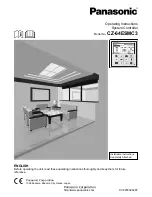
9
V01 05/2016 1003370
2. Mechanical installation
2.1 Notes for operation
Please be sure to avoid:
.
• penetration of damp into the device;
• aggressive or conductive substances in the immediate vicinity;
• drill chippings, screws or foreign bodies dropping into the device;
• ventilation openings being covered over, as otherwise the device may be damaged.
Note the following points:
• Cooling air must be able to flow through the device without restriction.
• For mounting in switch cabinets with convection (= heat loss is discharged to the outside via the cabinet walls),
always fit an internal air circulation fan.
• The backing plate must be well grounded.
• The device is designed only for vertical installation in switch cabinets.
• The switch cabinet must as a minimum provide IP4x protection.
Attention!
According to EN ISO 13849-2, when using the STO (Safe Torque OFF) safety function the switch cabinet must have
IP54 protection or higher.
• To attain the best result for EMC-compatible installation you should use a chromated or galvanized backing plate. If
backing plates are varnished, remove the coating from the contact area. The devices themselves have an aluminium
back panel.
• Max. pollution severity 2.
Further information on environmental conditions can be found in the appendix.
2.2 Wall mounting
Step
Action
Comment
1
Mark out the position of the tapped holes on the backing plate.
Cut a tap for each fixing screw in the backing plate.
For dimensional drawings/hole pitch see table 2, figure1
and figure 2. The tapping area will provide you with good,
full-area contact.
2
Mount the servocontroller
vertically
on the backing plate.
Observe the mounting clearances! The contact area must
be metallically bright.
3
Mount the other components, such as the mains filter, line reactor
etc., on the backing plate..
The cable between mains filter and servocontroller may
be max. 30 cm long.
4
Continue with the electrical installation in section 3.
Table 9.1 Mechanical installation










































